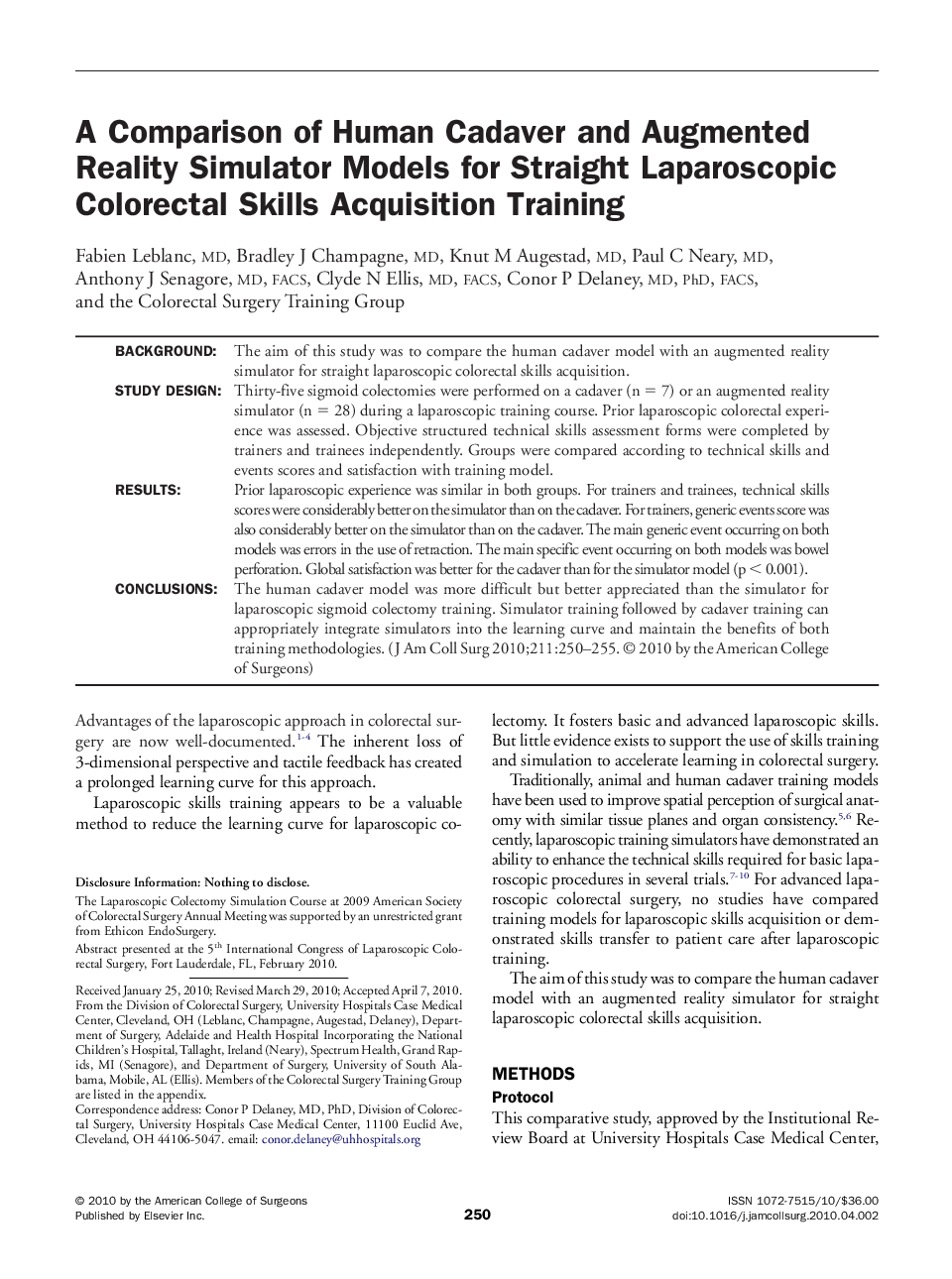| کد مقاله | کد نشریه | سال انتشار | مقاله انگلیسی | نسخه تمام متن |
|---|---|---|---|---|
| 4293155 | 1612283 | 2010 | 6 صفحه PDF | دانلود رایگان |

BackgroundThe aim of this study was to compare the human cadaver model with an augmented reality simulator for straight laparoscopic colorectal skills acquisition.Study DesignThirty-five sigmoid colectomies were performed on a cadaver (n = 7) or an augmented reality simulator (n = 28) during a laparoscopic training course. Prior laparoscopic colorectal experience was assessed. Objective structured technical skills assessment forms were completed by trainers and trainees independently. Groups were compared according to technical skills and events scores and satisfaction with training model.ResultsPrior laparoscopic experience was similar in both groups. For trainers and trainees, technical skills scores were considerably better on the simulator than on the cadaver. For trainers, generic events score was also considerably better on the simulator than on the cadaver. The main generic event occurring on both models was errors in the use of retraction. The main specific event occurring on both models was bowel perforation. Global satisfaction was better for the cadaver than for the simulator model (p < 0.001).ConclusionsThe human cadaver model was more difficult but better appreciated than the simulator for laparoscopic sigmoid colectomy training. Simulator training followed by cadaver training can appropriately integrate simulators into the learning curve and maintain the benefits of both training methodologies.
Journal: Journal of the American College of Surgeons - Volume 211, Issue 2, August 2010, Pages 250–255